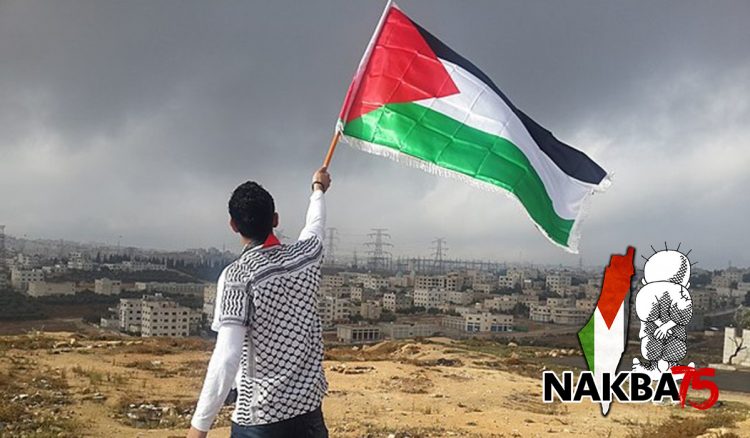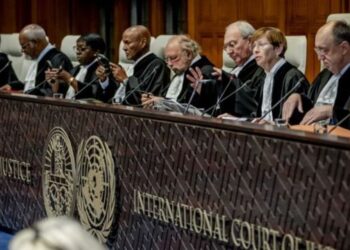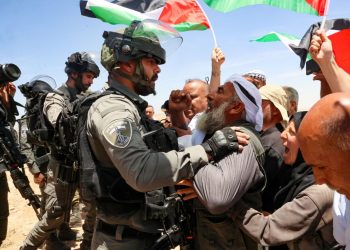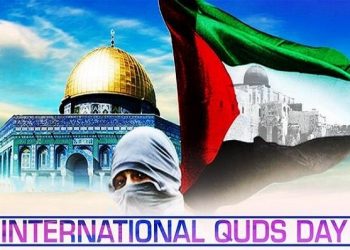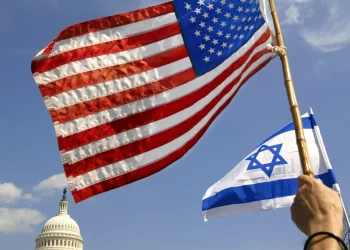Human Lives Human Rights: Nakba is an Arabic word meaning “catastrophe” and refers to Israel’s ethnic cleansing of Palestine, its exiling of Palestinians and making them into refugees, its dispossession of Palestinian property, its destruction of Palestinian cities, towns, and villages, and its attempt to erase the existence of the Palestinian people from its homeland in 1948.
Before, during, and after the establishment of Israel in May 1948, first Zionist militias and later the Israeli military used terrorism and committed massacres and other atrocities to drive Palestinians from their homes. Zionist militias and the Israeli military also systematically looted and demolished Palestinian property. By the time Israel signed armistice agreements with neighboring Arab states in 1949, there were an estimated 750,000 Palestinian refugees (approximately 75 percent of the Palestinian population of that lived on land that became Israel). Israel demolished between 400 and 500 Palestinian villages, town, and cities.
The Nakba is not only a historical event; Israel’s ongoing dispossession of Palestinians and colonization of Palestinian land means that the Nakba is ongoing and accurately defines Palestinian life under Israeli military occupation, apartheid, and settler-colonialism.
Before Nakba
Palestinians enjoyed a thriving and multi-religious society in Palestine long before Zionism began in the 1880s. Before World War I, Palestinian Muslims, Christians, and Jews lived together in Palestine with equal citizenship rights and religious autonomy under the Ottoman Empire.
Palestinians ran for elections to the Ottoman Parliament and represented their Palestinian constituencies there. The indigenous Palestinian economy was self-sustaining and also integrated into regional and global economic trade networks. Before and after World War I, Palestinian identity formed the basis for a modern-day Palestinian nationalism, expressed through newspapers, magazines, civil society organizations, and political parties.
Was Ethnic Cleansing of Palestine Planned?
Yes. In March 1948, Zionist leaders headed by David Ben Gurion, who would become Israel’s first prime minister, approved Plan Dalet (D), which called for the “Destruction of villages (setting fire to, blowing up, and planting mines in the debris)…In the event of resistance, the armed force must be wiped out and the population must be expelled outside the borders of the state.”
The implementation of this plan began before Israel’s establishment in May 1948. By that time, there were already between 250,000-300,000 Palestinian refugees who were expelled or fled from their homes often after attacks by Zionist militias on major Palestinian cities–Jerusalem, Haifa, Jaffa, Tiberias–and villages, bombing campaigns targeting civilians, and massacres at villages such as Deir Yassin.
This ethnic cleansing campaign accelerated and intensified after the establishment of Israel, making an estimated 750,000 Palestinians into refugees by the time armistice agreements were signed with neighboring Arab states in 1949. Even after the armistice agreements, Israel continued to ethnically cleanse Palestinians from their homes. For example, Israel continued deporting Palestinians from their homes in al-Majdal (known today as the city of Ashkelon) to the Gaza Strip until October 1950.
How many Palestinians are displaced?
From an original estimated population of 750,000 in 1948, today there are more than 7 million Palestinian refugees worldwide, 5.7 million of whom are refugees registered with the UN Relief and Works Agency for Palestine Refugees in the Near East (UNRWA), a specialized UN agency established in 1949 to provide social services to refugees.
There are estimated to be more than 400,000 Palestinian citizens of Israel who are classified as internally displaced persons (IDPs). These Palestinians were driven from their homes and dispossessed of their properties, too. Although they remained within the borders of what became Israel and received citizenship in the state, Israel has never allowed them to return to their lands and properties.

